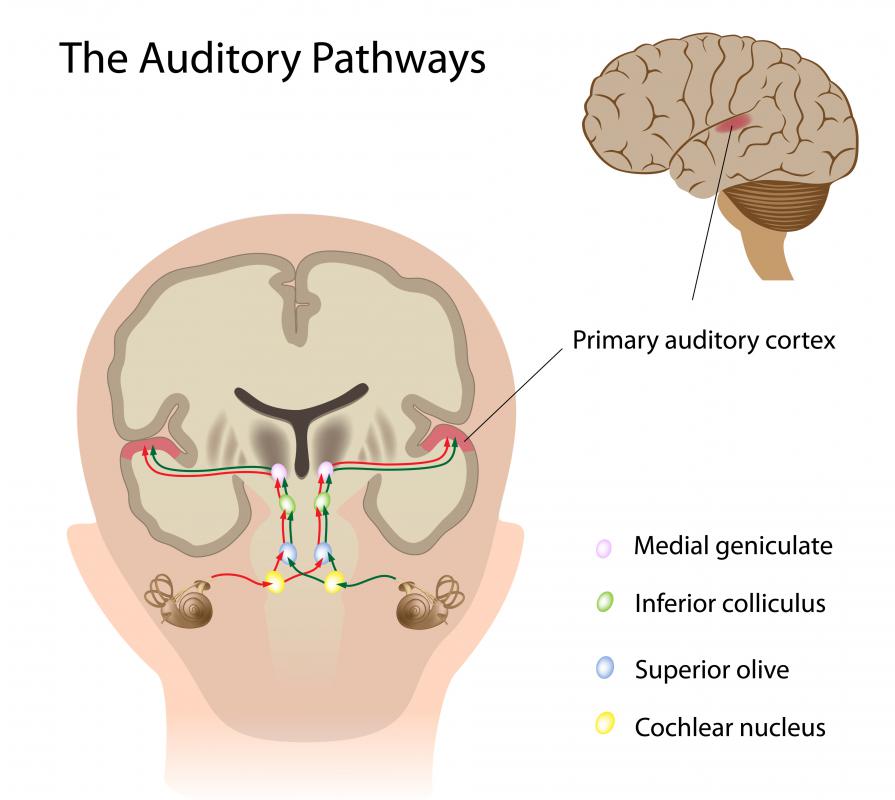At WiseGEEK, we're committed to delivering accurate, trustworthy information. Our expert-authored content is rigorously fact-checked and sourced from credible authorities. Discover how we uphold the highest standards in providing you with reliable knowledge.
What is Auditory Brainstem Response?
The brainstem, located at the juncture of the spinal cord and cerebrum, is a vital part of the nervous system. It contains important neural structures that are responsible for many body functions, such as breathing, swallowing, equilibrium, and hearing. Auditory brainstem response (ABR) is the electrical signal evoked from the brainstem in response to noise.
An auditory brainstem response test (ABRT), also known as brainstem auditory evoked response test, is a neurological test used to measure the electric signals that are induced by the brainstem as it responds to sound. It is a test used to evaluate hearing and brain function. Auditory brainstem response is measured in infants and young children to screen for hearing problems. It is also measured when a person shows signs of hearing impairments, a brain tumor, a balance disorder, or conditions that attack the nerves, such as multiple sclerosis. Since it is involuntary, auditory brainstem response is also used to test neurological integrity and hearing in those who are in a coma, unresponsive, or who have had a stroke.

A certified clinical audiologist will usually perform and interpret the auditory brainstem response test. The test is relatively simple—generally taking less than 30 minutes—and is non-invasive and painless. Auditory brainstem response is measured by attaching electrodes to the ear lobes and scalp.
During the test, a series of clicking noises are delivered to the ear through earphones, which stimulate the hearing nerves and brain. The brainstem emits waves, or brainstem auditory evoked potentials (BAEPs), in response to the clicks, and which are sensed by the electrodes. The BAEPs, and any changes that occur to them, are then recorded and graphed.

Based on the highs and lows of the graph, and their timing in relation to the auditory stimuli, the audiologist can assess the health of the hearing nerves and any other neurological components that aid in hearing. The normal range for auditory brainstem response will vary from patient to patient, and with the equipment used to perform the test. The audiologist will take this into consideration while assessing the results. If the audiologist determines that the results are abnormal, further tests by a physician may be needed.
AS FEATURED ON:
AS FEATURED ON:













Discussion Comments
I am losing my hearing in one ear. After doing a hearing test, my ENT sent me for an ABR test.
They called with the results of the test and said that my test is borderline and that I should come for another hearing test in 6 months. What does this mean?
To perform a full ABR test takes about two to three hours, not 30 minutes or less, as cited above. This is especially true for infants.
Post your comments